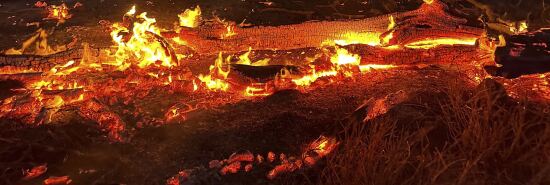
Science is real. Climate reporters apparently just don’t bother to read it
Nicholas Clairmont
Video Embed
As I write, smoke still rises off of Hawaii, and we do not have a final death count from the inferno that has claimed at least 55 lives. This tragedy has taken a toll not only on human lives but also on physical infrastructure and cultural treasures (Lahaina, one of the worst-struck towns, was the seat of the king of the united Hawaiian Kingdom in the early and mid-1800s).
It is for this reason that it would be so ugly to use the disaster as a talking point, especially a talking point that is factually wrong or not supported by the available research and evidence. Nonetheless, that is just what many politicians and media outlets are irresponsibly doing with the Hawaiian fire disaster as they attribute the drought and storm wind conditions that left the Hawaiian islands, and especially Maui, so susceptible to wildfire. In reality, the best actual institutional, peer-reviewed, published science on Hawaiian drought conditions finds that they cannot be attributed to climate change.
INFLATION COMPLICATES BIDEN’S PATH BACK TO THE WHITE HOUSE
Yet Gov. Josh Green (D-HI), speaking on the fires at a news conference, said, “Climate change is here, and it’s affecting the islands.” The Washington Post, in its Climate Morning newsletter, wrote that “in recent months, a climate-fueled drought has also dried out grasses and shrubs on the island, making them more flammable.” The New York Times has a story titled “How climate change turned lush Hawaii into a tinderbox.” Its evidence is a general argument that “as the planet heats up, no place is protected from disasters” and a quote from climatologist Abby Frazier, who told the New York Times earlier this year that “there’s likely a climate change signal in everything we see.”
The Guardian wrote that the fires “were worsened by a number of factors including climate change, scientists have said.” The scientists in question and their science? The piece quotes a tweet (yes, a tweet) by chief scientist of the Nature Conservancy Katharine Hayhoe, reading, “Climate change doesn’t usually start the fires; but it intensifies them, increasing the area they burn and making them much more dangerous.” Careful readers will note this tweet is a general description of how hotter conditions can create flammability, not a statement of the claim that these fires were worsened. The Guardian also quotes a very measured and legalistic statement from Oregon State University scientist Erica Fleishman (who actually gave the quote to CNN and is being reused here by a lazy reporter at the Guardian): “Some of the things that we’re seeing with this wildfire in Maui are consistent with some of the trends that are known and projected as climate changes.”
The reason professional climate scientists will give reporters quotes that vaguely give casual readers the impression that they are affirming the thesis that these fires were caused by climate change, while avoiding actually saying that, is that there isn’t any evidence it’s true. The science of attributability, how much climate change caused some specific weather event or trend, has some core conceptual problems and is a baby science, but it does exist and is likely to improve over time.
There is little quick turnaround research in general, and none on recent Hawaiian droughts in the reputable likely sources, Climate Central or World Weather Attribution. The American Meteorological Society’s Journal of Climate did look at the longer-term trend of drought in Hawaii in 2022, giving “a diagnosis of the Hawaiian drought … assessing various possibilities for its nature and causes based on analysis of climate model experiments.” This, the best and most recent summary from institutional research, rather than a tweet, is the actual “The Science” that supposedly the staff of outlets such as the Washington Post and the Guardian are so enthused over.
Yet they apparently don’t actually read or care about The Science, since what it found among different models with varying likelihood on ”anthropogenic forcing” (that means how much things are caused by humans) is different models show some evidence we could create more rainfall or less rainfall in Hawaii, in a range of a few percent, and overall the models wash out. Remember the New York Times using a quote, not from a journal article but just from calling someone for general comment, saying, “There’s likely a climate change signal in everything we see”? What the science actually concludes is that “no forced signals are detectable.”
CLICK HERE TO READ MORE FROM THE WASHINGTON EXAMINER
Or, to put that in non-scholarese, there’s no evidence climate change, which absolutely exists, is the cause of this particular drought trend. Life’s complicated!
It’d be funny if it weren’t so ghoulish that people employed to explain the truth to the public are instead totally incurious about the complications and findings of science, emotionally immune to the human tragedy of weather disasters, and reflexively single-minded about pushing narratives. To reform, they should start by noting that, while climate change is real, the technologies that belch all those greenhouse gasses have led to a world in which, over the past 50 years, deaths from extreme weather “decreased almost three-fold,” according to the World Meteorological Association.
Nicholas Clairmont is the Life & Arts editor of the Washington Examiner magazine.
